Related Research Articles

Saturniidae, members of which are commonly named the saturniids, is a family of Lepidoptera with an estimated 2,300 described species. The family contains some of the largest species of moths in the world. Notable members include the emperor moths, royal moths, and giant silk moths.

Oxytenis is a genus of moths in the family Saturniidae and subfamily Oxyteninae. They are also known as jigsaw emperor moths. he genus was erected by Jacob Hübner in 1819. During its larval form, it has large eyespots on the front of its head in an attempt to mimic a snake. The larva has unusual, large, almost wing-like, fleshy protrusions on either side.
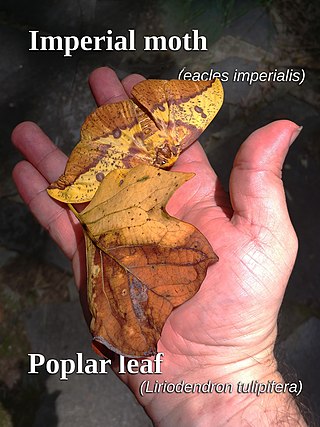
Eacles is a genus of moths in the family Saturniidae. They are native to the Americas. The genus was erected by Jacob Hübner in 1819.

Saturnia is a genus of large silkmoths in the family Saturniidae, which the German biologist Franz von Paula Schrank first described in 1802. Its members are commonly named emperor moths, though this is also used for various close relatives in subfamily Saturniinae. Most species are Palearctic, but three, commonly called "saturnia moths", inhabit the chaparral of California: S. mendocino, S. walterorum, and S. albofasciata.

The Sulawesi moon moth or Isis moon moth is a moth of the family Saturniidae first described by Léon Sonthonnax in 1899.
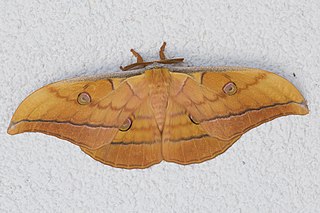
Antheraea is a genus of moths belonging to the family Saturniidae. It was erected by Jacob Hübner in 1819. Several species of this genus have caterpillars which produce wild silk of commercial importance. Commonly called "tussar silk", the moths are named tussar moths after the fabric.
Gilles Terral was a French entomologist. He specialised in Lepidoptera Parnassiinae and Saturniidae.
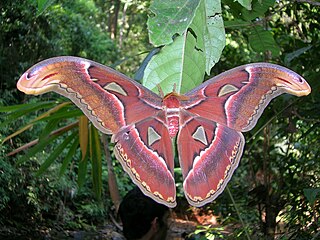
Attacus is a genus of moths in the family Saturniidae. The genus was named by Carl Linnaeus in his 1767 12th edition of Systema Naturae.
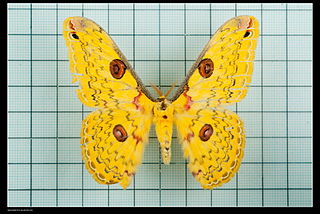
Loepa is a genus of moths in the family Saturniidae.
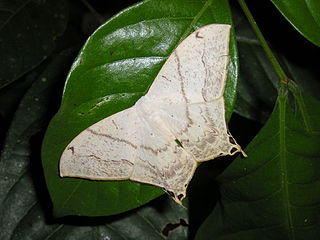
Therinia is a genus of moths in the family Saturniidae first described by Jacob Hübner in 1823.

Aglia is a genus of moths in the family Saturniidae first described by Ochsenheimer in 1810. It is the only genus in the subfamily Agliinae.

Cercophaninae is a subfamily of the family Saturniidae, and was, until recently, treated as a separate family, Cercophanidae.

Microdulia is a genus of moths in the family Saturniidae first described by Karl Jordan in 1924. It contains only one species, Microdulia mirabilis, described by Rothschild in 1895, which is found between 35° and 47°S in Chile and Neuquén in Argentina.
Homoeopteryx is a genus of moths in the family Saturniidae first described by Felder in 1874.

Samia is a genus of moths in the family Saturniidae. The genus was erected by Jacob Hübner in 1819.

Cricula is a genus of moths in the family Saturniidae first described by Francis Walker in 1855.
Neodiphthera is a genus of moths in the family Saturniidae. It was described by David Stephen Fletcher in 1982.

Syntherata is a genus of moths in the family Saturniidae first described by Peter Maassen in 1873.

Actias groenendaeli is a moth of the family Saturniidae first described by Roepke in 1954. It is found in Indonesia.
Cricula ceylonica, the Sri Lankan cricula silkmoth, is a moth of the family Saturniidae. The species was first described by Karl Jordan in 1909 and it is endemic to Sri Lanka. The debate of this species with much broader range circular species - Cricula trifenestrata is not yet fully understood. However, Rougerie et al., in 2009 considered Cricula ceylonica a valid species, probably endemic to Sri Lanka.
References
- ↑ Rougerie, R. & Collective of iBOL Saturniidae expert taxonomists (2009). "Online list of valid and available names of the Saturniidae of the World". Lepidoptera Barcode of Life.